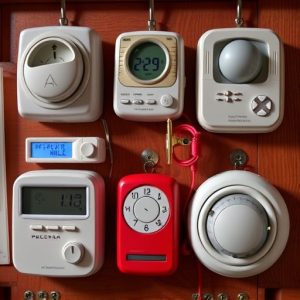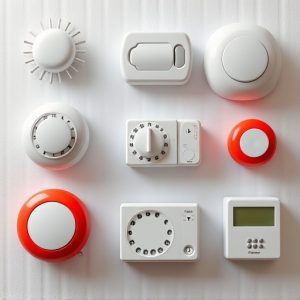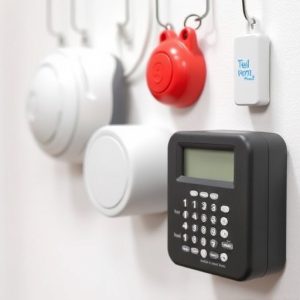Personal Safety Devices: Protecting Yourself in Emergency Situations
Personal alarms, essential emergency tools, vary in range based on frequency, power, and environment…….
Personal alarms, essential emergency tools, vary in range based on frequency, power, and environmental factors. When selecting an alarm for buildings, consider line-of-sight obstructions, reflective surfaces, and open spaces to maximize signal strength. Key features include customizable settings, remote monitoring, GPS tracking, water resistance, and automatic fall detection. Choose a device aligned with specific needs, whether for outdoor activities or navigating complex indoor environments like homes or offices.
In today’s unpredictable world, ensuring personal safety is paramount. Emergency situations can arise anywhere, and being prepared makes all the difference. This article guides you through the essential aspect of personal safety devices, specifically focusing on their role in various settings, especially within buildings. We’ll explore different types of personal alarms suitable for diverse environments, helping you make an informed choice to protect yourself and your loved ones. Understanding the right Personal Alarm Range in Buildings is key to staying safe.
- Understanding Personal Safety Devices for Emergency Situations
- Types of Personal Alarm Range in Buildings and Their Features
- Choosing the Right Personal Safety Device for Your Needs
Understanding Personal Safety Devices for Emergency Situations
Personal safety devices are crucial tools for emergency situations, designed to alert others and request assistance quickly. Among these, personal alarms stand out due to their compact size and wide range of capabilities. These devices can be especially vital in large buildings where communication might be hindered or visibility limited. A personal alarm’s effective range in such structures is a key consideration; it ensures that help can be summoned promptly from any corner of the building.
Understanding this range involves knowing the signal strength and propagation characteristics of the alarm device. Factors like frequency, power output, and environmental conditions influence how far the alarm’s distress call can travel. In indoor settings, line-of-sight transmission may limit range, while reflective surfaces or open spaces can enhance it. Knowing these dynamics helps in selecting an alarm with a suitable range to cover all areas of concern within a building.
Types of Personal Alarm Range in Buildings and Their Features
In emergency situations, having a reliable personal alarm system within buildings is paramount for safety. The Personal Alarm Range in Buildings offers various options tailored to different needs. These systems typically include devices like panic buttons, portable alarms, and automatic fall detection wearables. Each device is designed to emit high-decibel sounds, immediately alerting authorities or building staff to an individual’s distress.
Key features often include customizable settings for alerts, remote monitoring capabilities, and integration with security networks. Some advanced models even incorporate GPS tracking, allowing responders to pinpoint the exact location of the alarm activation. This technology is particularly beneficial in large or complex buildings, ensuring a swift and targeted response during emergencies.
Choosing the Right Personal Safety Device for Your Needs
When selecting a personal safety device, understanding your specific needs and environment is paramount. Different scenarios require unique solutions—for instance, a compact, high-decibel personal alarm may be ideal for outdoor activities or travel, while a more sophisticated device with GPS tracking could be better suited for individuals living alone or navigating unfamiliar buildings. Consider the personal alarm range in buildings; some devices offer excellent signals that penetrate walls and floors, ensuring help can be summoned quickly during an emergency inside a home or office.
Features like water resistance, easy operation, and automatic fall detection are valuable additions, especially for those engaging in outdoor pursuits or living in areas with varying weather conditions. Additionally, the integration of smart technology, such as Bluetooth connectivity, allows users to monitor their device’s status and even locate it if misplaced. By evaluating your circumstances and desired capabilities, you can select a personal safety device that offers both peace of mind and reliable protection during emergencies.
Personal safety devices, particularly personal alarm ranges in buildings, play a vital role in enhancing emergency response and ensuring the well-being of individuals. By choosing the right device that suits specific needs, whether it’s for home, office, or public spaces, we can significantly improve our preparedness during unforeseen crises. Understanding the features and options available within the diverse Personal Alarm Range in Buildings equips us to make informed decisions, ultimately fostering a safer environment for all.


